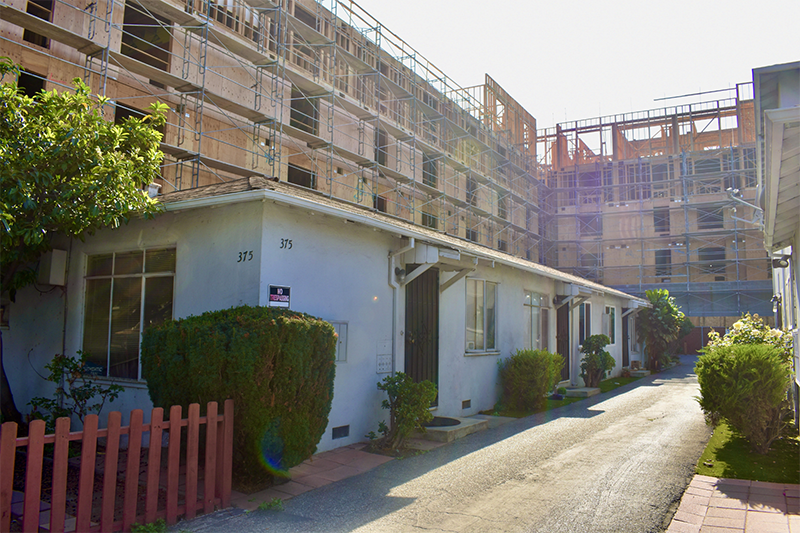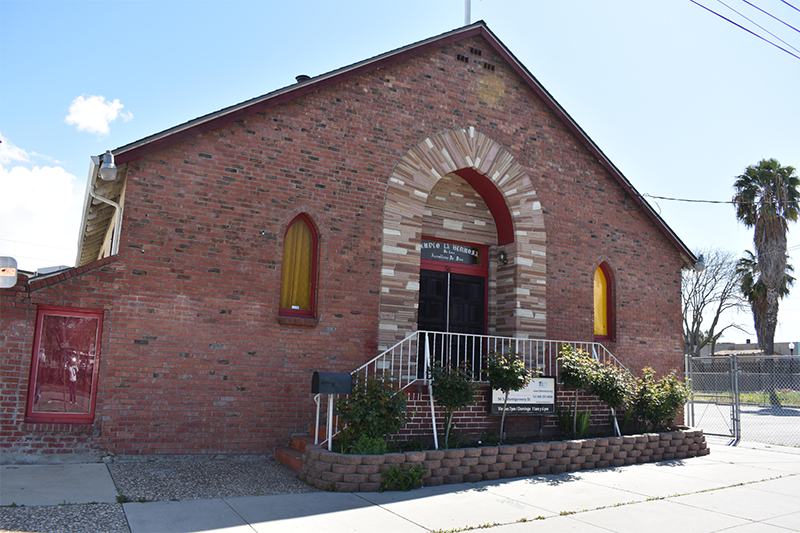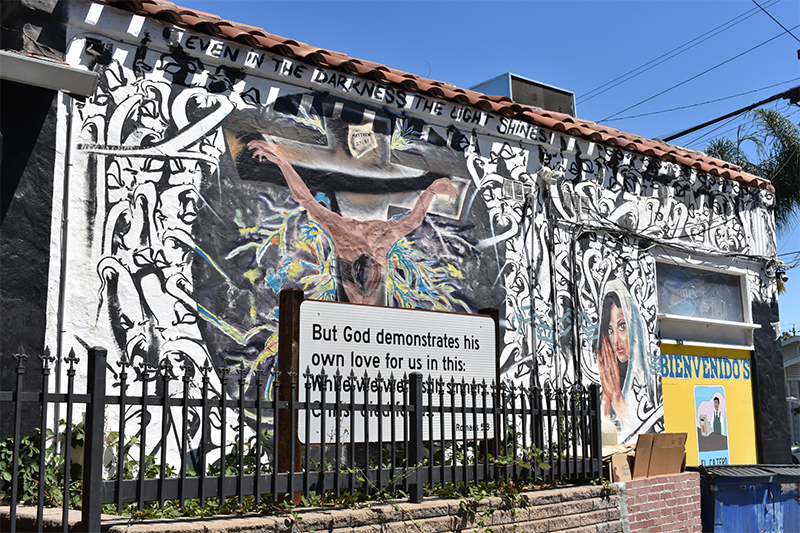
RS Faculty Present Research in Bannan Forum “Finding God in Googleville” Panel
In October, the Bannan Forum presented a panel highlighting the work of Religious Studies faculty members Elizabeth Drescher, Roberto Mata, Philip Boo Riley, and Jaime Wright, who have been exploring the role of religious communities, faith-based organizations, and individuals in addressing questions of justice, housing, and the creation of flourishing local communities.
Elizabeth Drescher and Jaime Wright presented early insights from their project “Finding God in Googleville,” which examines the interplay of urban development, religion, and spatial justice in Silicon Valley. Their project tracks the development of the Google campus in San Jose (aka, Googleville), its impact on local residents, and the role of religion in addressing inequities that arise from corporate development.
Their approach, developed in several place-based religious studies courses, looks at diverse forms of religion (e.g., congregations, congregational community services, faith-based service organizations, commercial religion, etc.), the functions of religion (socio-cultural identity, social infrastructure, material support), and the distribution of religion (i.e.,what kinds of religious forms appear in what kinds of urban neighborhoods). Working with SCU students Aidan Latimer and Danny Walsh, Elizabeth and Jaime have developed GIS mapping tools that include layers of historical, demographic, and trend data that help students and faculty understand how the religious landscape is embedded in urban histories and contemporary economic, housing, and population trends. These resources are available on the Finding God in Googleville website.
Boo Riley’s presentation provided a concrete illustration of one of the spatial injustices in San Jose that is indicative of the broader housing crisis: homelessness. He began by discussing a recent article on homeless deaths in Silicon Valley co-authored with Jamie Suki Chang (SCU Public Health), Robert J. Aguirre, Katherine Lin (SCU Public Health), Marius Corwin, Nicole Nelson, Madison Rodriguez, “Harms of Encampment Abatements on the Health of Unhoused People.” The article is accompanied by an interactive map on deaths of unhoused people in Santa Clara County. The article argues that, because encampments mitigate the harmful effects of living on the street by providing social support, services, community, supplies, etc., recent sweeps of encampments have contributed to the rise of homeless deaths in the area. He then gave an overview of his current research on homelessness and spirituality, explaining how it will focus on the variety of interventions by faith-based service providers as well as the daily experience of individuals living in encampments.
Roberto Mata discussed his recent article, “‘And I Saw Googleville Descend from Heaven’: Revelation, Revitalization and Spatial Justice,” which analyzes the rhetoric of revitalization underlying John’s introduction of the New Jerusalem in Revelation 21 to explore the rhetoric of “urban revitalization” used by government officials and corporate developers to describe projects like the Googleville development. Roberto highlighted the struggles of gentrified Latinx communities in Silicon Valley through the lens of Elisabeth Schüssler-Fiorenza’s emancipatory-rhetorical paradigm of biblical interpretation to open a new space for the concerns of marginalized communities. Reading spatial justice in this way allowed Roberto to unmask the “dark side” of John’s rhetoric of revitalization in Revelation, exposing the New Jerusalem as a gentrifying entity. Roberto argues that, like Googleville, John’s revitalizing project masks (1) the exclusion of unwanted others by presenting them as unclean and unfit to live in the city; (2) displaces and replaces the citizens of the “old creation”; and (3) keeps unwanted “others” at bay through heavy policing of its walls. He concludes that reading scripture for spatial justice requires that we read against the grain and consider how the inscribed power dynamics of sacred texts may reinforce the exclusion of minority communities today.
Elizabeth, Jaime, Boo, and Roberto’s work, while applying different academic approaches, seeks to understand how religion is embedded in and responds to the concrete, everyday places where ordinary people live. Their work calls into question the utopian myth of Silicon Valley as a center of unproblematic progress and success, and provides practical and conceptual tools for understanding how religious individuals, congregations, organizations, and networks are the integral components in engaging the challenges of contemporary urban life.

Templo La Hermosa Church on Montgomery St., across from Diridon Station, was one of the early displacements of religious communities that support ministries to immigrants and the unhoused in San Jose. The property was sold to Google in 2020 to avoid the risk of seizure through eminent domain. (Photo by Elizabeth Drescher, 2020).

Mural art throughout Silicon Valley expresses the cultural, religious, and social perspectives of residents of neighborhoods that are at risk of gentrification. (Photo by Elizabeth Drescher, 2022).